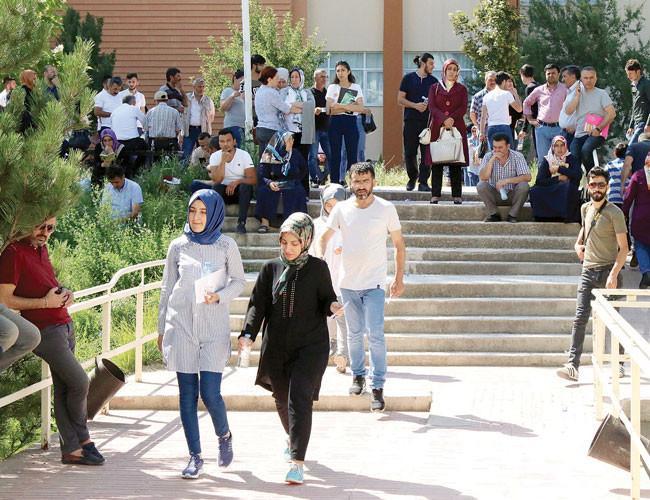
Twenty-two percent of candidates have scored below the threshold of 150 points, i.e. they answered less than 15 out of 120 questions correctly, in the first round of the university exam called the Basic Proficiency Test (TYT).
The Council of Higher Education (YÖK) announced the results of all three rounds of the Higher Education Institution Examination (YKS) on July 31 and revealed 496,616 out of 2,260,273 candidates, whose scores were calculated for the TYT, could not pass the threshold level that is needed to apply to any university.
Some 41,281 candidates on the other hand, scored zero “raw points” in the exam, as the raw score is obtained by calculating the sum of points earned based on the number of questions answered correctly and minus a fourth of a point for every incorrect answer.
The TYT took place on June 30 and candidates had 135 minutes to answer 120 multiple choice questions in the fields of Turkish language, social sciences, basic mathematics and physical sciences.
The results revealed on July 31 showed candidates were most successful in the Turkish language field and least successful in physics. On average, candidates received a raw score of 16 out of 40 on the Turkish language section.
In the mathematics section and physical sciences section, 8 percent and 7 percent of candidates respectively could not even answer one question correctly. The average raw point was reported as 5.6 for the mathematics section.
The second and third round of the YKS, called the Area Qualification Test (AYT) and Foreign Language Test (YDT) respectively, took place on July 1.
The scores of some 1,877,568 candidates were calculated for the AYT. The second round of the exam exposes students again to the areas of Turkish language, social sciences, basic mathematics and physical sciences, but asks more advanced-level questions.
Eleven percent of candidates who took the AYT could not answer any of the questions correctly in the mathematics section, whereas this figure was 8 percent for the physical sciences section. Again, as in the TYT, the candidates were most successful in the Turkish field and least successful in physics. The average raw points for the physics sections was reported as 0.467.
As for the third round of the exam, called the YDT, the candidates had a choice of testing their proficiencies in one of the following languages: German, Arabic, French, English, or Russian. The German and Russian proficiency tests were, respectively, the most preferred tests by the candidates. And the least came Arabic.
YÖK has also released the success rates of high schools based on their type. Accordingly, students who graduated from science high schools (“fen lisesi” in Turkish) performed best on exams, followed by private science high schools and social sciences high schools.
The candidates will submit the relevant application to the university and department they want to study at during the period between Aug. 7-14.